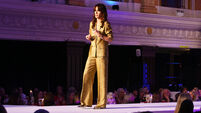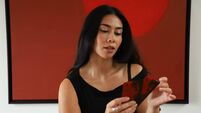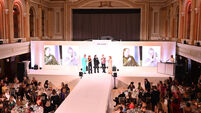What I learned when I went to France to see how Chanel make their No. 5 perfume
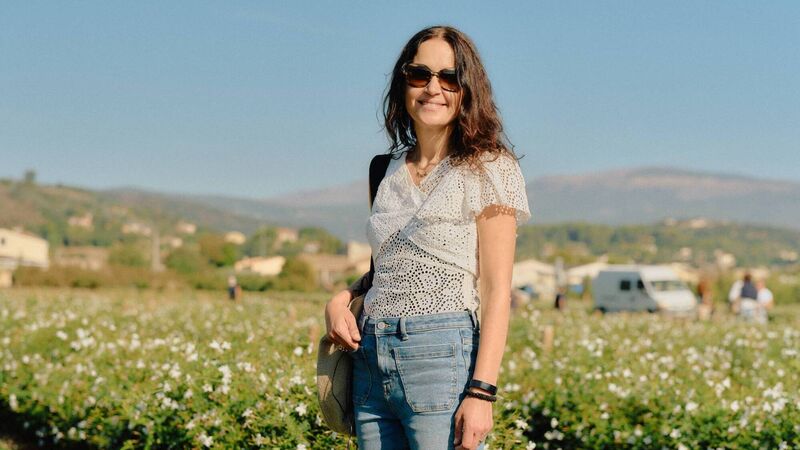
Vickie Maye walks through Chanel's fields
The moment we step inside the jasmine fields there is a shift in the air. The sweet floral scent is so encompassing it all but embraces you.
We are visiting the Mul family farmland in Grasse, just minutes from Nice and the French Riviera. In the late 1980s the family formed a partnership with Chanel — here they grow jasmine, May rose, geranium, iris, and tuberose exclusively for the luxury house.
For Chanel — the only brand with this exclusivity with a grower — it ensures the quality of the raw material it uses for iconic fragrances such as No 5 is protected.
It is a balmy September morning, and peak season for jasmine harvesting (there are just two optimal months in the year). The flower blooms at night and is picked in the early morning. As far as the eye can see there is row upon row of the delicate white flower. Pickers sit on their haunches, gently pulling the flower away from the stem. From first light to lunch time, they fill baskets — wicker, so the air can circulate — covering their yield with a damp cloth to protect it.
Each gatherer picks 350 grams of flowers per hour, and one kilogram of jasmine represents 8,000 flowers.
We meet Joseph Mul’s granddaughter, the vibrant woman carrying on the family business. She tells us how the roots are wrapped in winter to protect the harvest, she describes the sensors in the ground that determine the exact temperature. At first glance the jasmine fields appear deceptively simple, but there is an exact science at play.
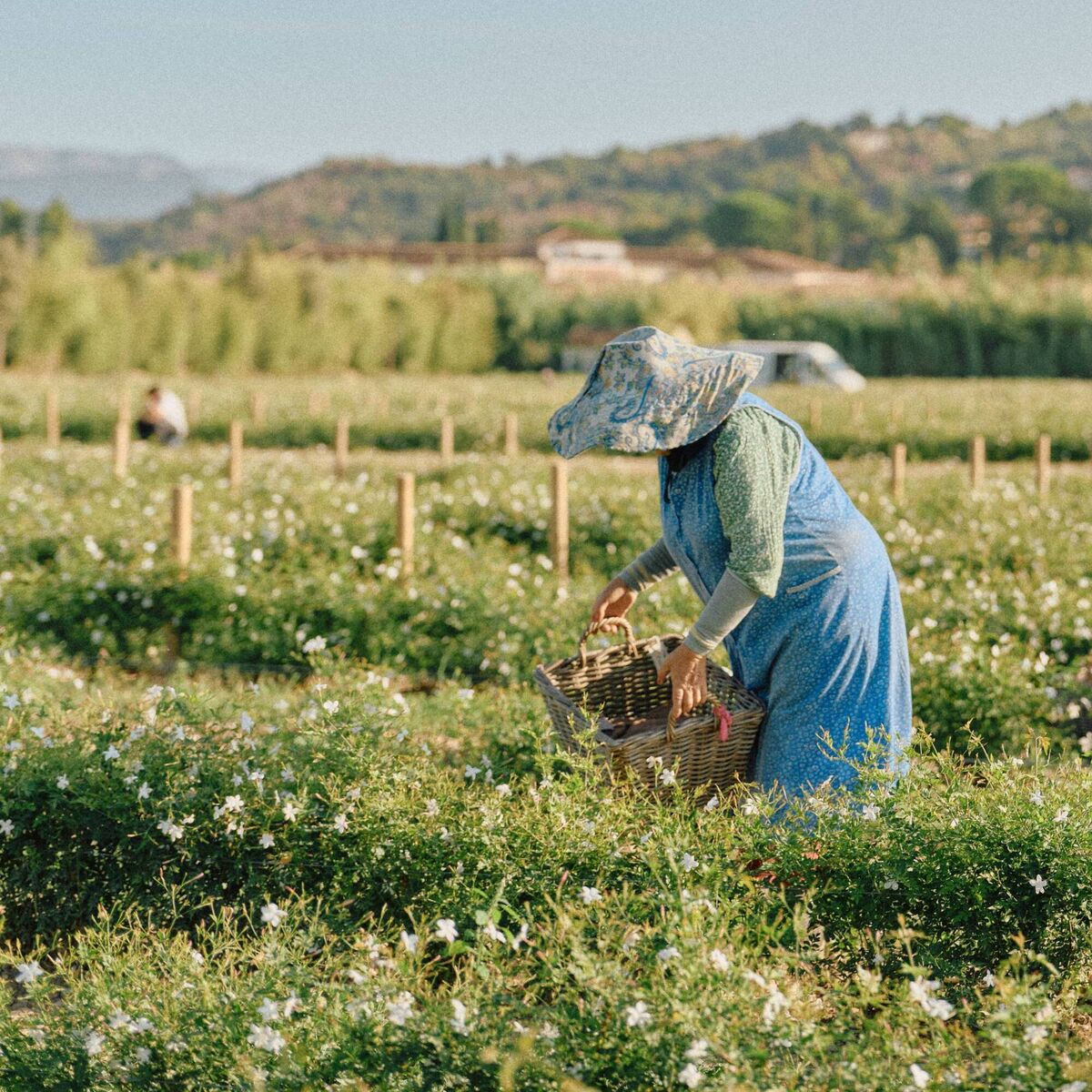
Later these gatherers will bring their baskets to be weighed. Chanel estimates it would take 1,000 jasmine flowers to make a 30g bottle of No 5.
Next, they are taken to the on-site factory for the extraction. The flowers are immersed at a high temperature in a solvent that soaks up all of their scent. Once the solvent has evaporated, the scent is captured in a wax called a concrete; 350kg of jasmine are needed to produce 1kg of concrete. Next, the absolute is attained by separating the alcohol from the substance. One kilogram of concrete guarantees 550g of jasmine absolute.
This absolute liquid is delivered to Chanel’s laboratory outside Paris, especially for the iconic No 5 parfum.
Legacy is a central tenet for Chanel. And Grasse encompasses all of these values.
Renowned as “the cradle of French perfumery”, the fertile earth of Grasse has grown the finest flowers for perfumery for 300 years.
When Gabrielle Chanel wanted to make a perfume she said she wanted a scent created in the same way that she would design a dress with different materials — she didn’t want the perfume to smell like jasmine, rose, or lily of the valley, she wanted a man-made substance.
It was in 1921 that perfumer Ernest Beaux decided that the jasmine of Grasse offered the perfect notes for No 5.
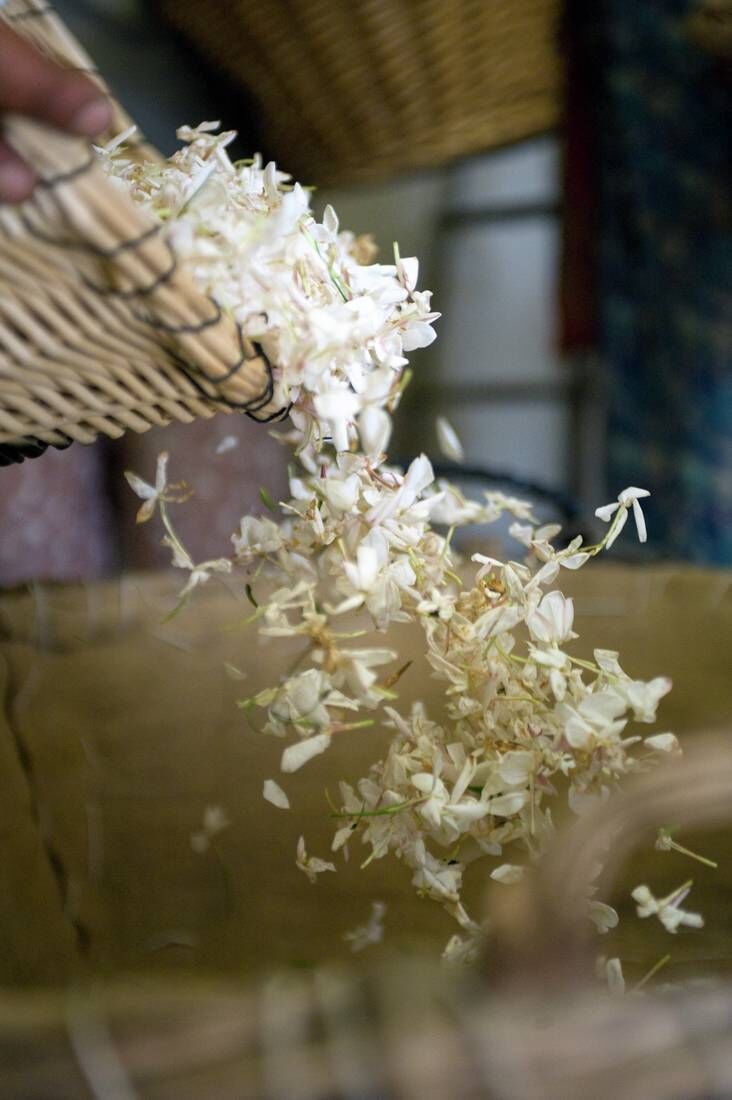
Six decades later, Chanel’s then head perfumer Jacques Polge would secure Chanel’s exclusive connection with Grasse, thanks to the deal agreed with the Mul family.
Today, in a beautiful twist of fate, his son Olivier is the nose of Chanel. We meet in the afternoon, after the day’s harvest is complete. He sits by a window, outside a row of Chanel bicycles. Their wicker baskets stand idyllically in front of the fields of jasmine.
Immediately we talk about his father’s influence. Jacques Polge was head perfumer at Les Parfums Chanel from 1978 to 2015.
“The impact is certain, because I’m here today,” he says.
“But he didn’t teach me perfume. When I started to work, he sent me away to probably the people he thought were the correct ones to teach me perfumes. The first place he sent me was to Grasse. I worked for two years here, learning from a perfumer.
“He lives in Paris now and still asks me a few questions. He still receives his emails from Chanel and checks regularly.”
He recognises and values his father’s legacy. “His predecessor was working for Chanel from 1954 to 1978 and he created three perfumes. My father was here from 1978 to 2015 and the number of fragrances [he made], I cannot count.
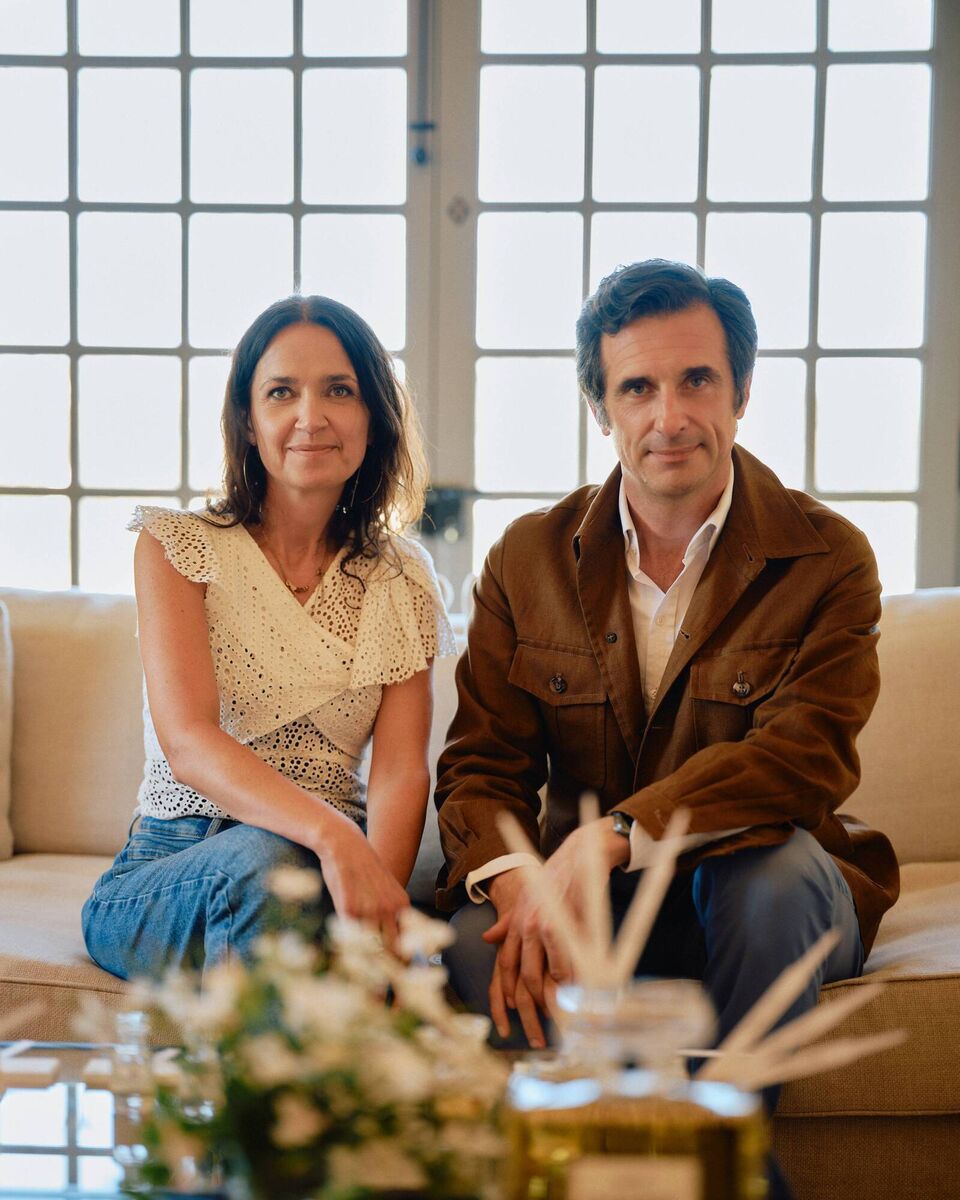
“He didn’t teach me perfume, but when I joined Chanel, we worked together for a year and a half, or something like that, and we exchanged the most about Chanel perfumes, certain technical things.
“And what was interesting, which is completely true, is that before him, we didn’t have interviews with Henri Robert or Ernest Beaux. Somehow he became the first perfumer at Chanel who spoke up and explained Chanel’s style, Chanel’s history.”
We are privileged to share something of a masterclass with Polge. We smell raw ingredients with him, jasmine from Grasse and from Egypt, rose — and then iris. The flower feels earthy and overwhelming.
Later, heeding Polge’s advice to let a fragrance settle, I return to the iris and it is my unexpected favourite. He tells us how to apply perfume (on the neck), shares his own favourite scent (No 19), talks about Marilyn Monroe and her unexpected devotion to the luxury house.
I begin to find the fragrances overpowering, one scent layering on top of the other. And I ask how he does this, day in day out.
“We can’t be overwhelmed, we have to be careful. It’s technical. When I work, I try to work in a neutral ground. I would not wear a fragrance. We have a special air system to renew the air, so the air is always clean,” says Polge.
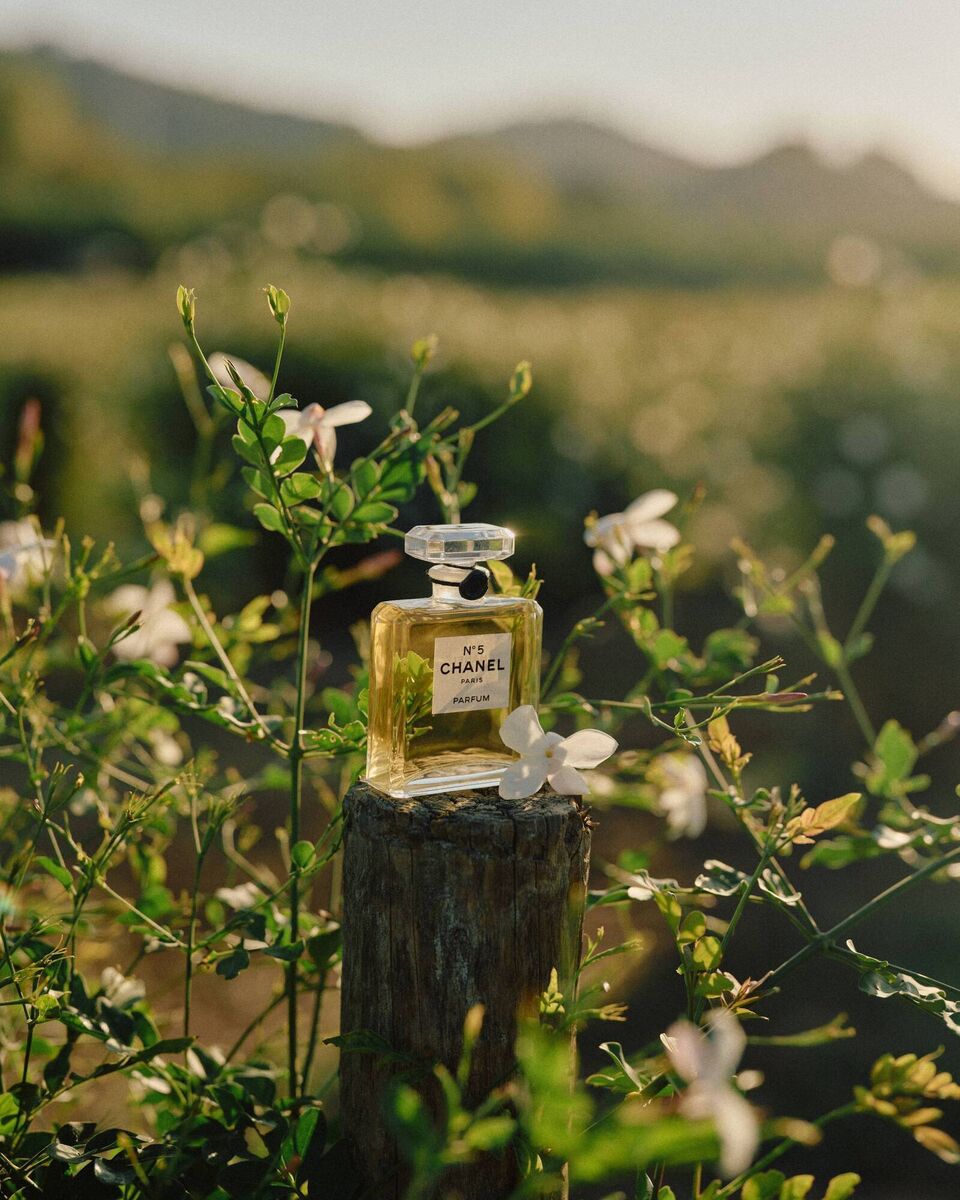
The trick, he adds, is not to let a scent linger under your nose for too long.
“You might make the mistake, when you analyse a scent, to keep it below your nose, to think about it, to try to catch things. But in fact, when you are trained, you inhale once, and basically all the information is in your mind.
“This is not just me, it is all of us,” he adds, insisting, with great modesty for a man who has created some of the world’s most captivating fragrances, that this is not a gift he was born with.
“I am convinced that it is something you can learn. It takes a long time, and it’s not a matter of smelling what people don’t smell. It’s not the accuracy of your nose. I would say it’s more about the accuracy of your mind.”
As for No 5 itself, the original 1921 formula is still protected. And if it was discovered? Polge smiles, reaching his arm in the direction of the vast fields of jasmine. “They would not have the raw materials to make it.”
CONNECT WITH US TODAY
Be the first to know the latest news and updates




